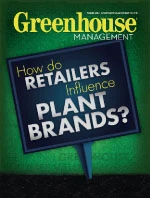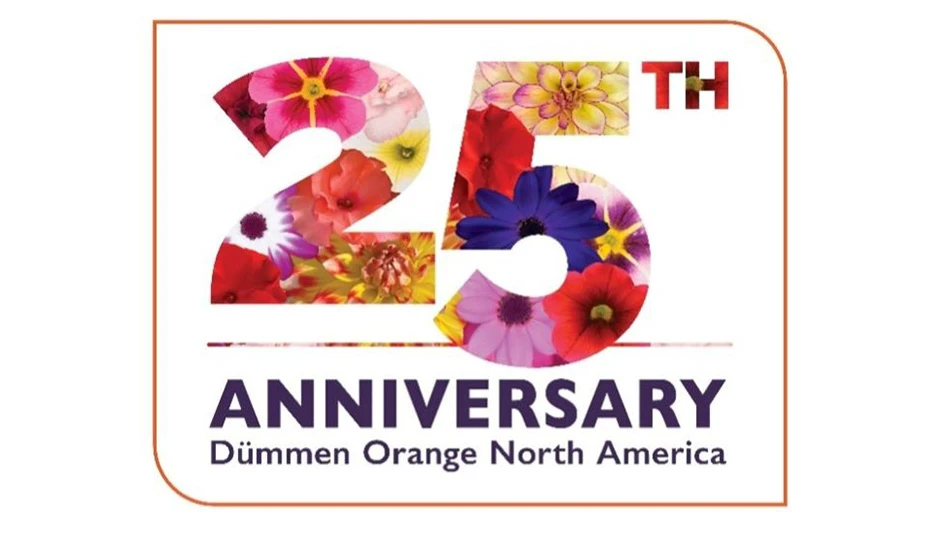 Plants for green infrastructure plantings should be selected based on their demonstrated ability to thrive in the ecosystem into which they will be planted without being overly aggressive or invasive.Rain gardens, terraces, contour plantings, bio-swales and green roofs are becoming standard landscape installations. These green infrastructure installations are becoming more commonplace in both commercial and municipal landscape plantings. Plants for green infrastructure plantings should be selected based on their demonstrated ability to thrive in the ecosystem into which they will be planted without being overly aggressive or invasive.Rain gardens, terraces, contour plantings, bio-swales and green roofs are becoming standard landscape installations. These green infrastructure installations are becoming more commonplace in both commercial and municipal landscape plantings.U.S Green Building Council’s Leadership in Energy and Environmental Design (LEED) rating system has had an impact on building design and construction since 1998. The Sustainable Sites Initiative (SITES) is slated to be adopted into the LEED program next year. The Initiative seeks to apply sustainability principles to both public and private sites. The Sites guidelines and performance benchmarks can apply to all landscapes, including commercial and public sites and residential landscapes. Virtually all new federal buildings must now meet at least silver LEED certification. LEED certification is also becoming a requirement for many state and municipal projects. Proctor & Gamble announced in February that it will pursue LEED certification for all of its new installations. The Metropolitan Sewer District of Greater Cincinnati (MSD) anticipates spending in excess of $2 billion over the next 20 years on a combination of green infrastructure and grey sewer systems in conjunction with its global consent decree.  Nothing magical How can greenhouse growers take advantage of the increased installation of these green infrastructure plants? Unfortunately, many growers think of these plants as being unusual, almost magical, and very different from what they are currently producing.  The Sustainable Sites Initiative emphasizes sustainability and requires plantings that are low maintenance, including requiring little fertilizer, irrigation, pesticides and deadhead/pruning. The Sustainable Sites Initiative emphasizes sustainability and requires plantings that are low maintenance, including requiring little fertilizer, irrigation, pesticides and deadhead/pruning.In most cases, plants for infrastructure installations such as rain gardens, swales and contour plantings must meet the same requirements as other landscape plants. They should be selected based on their demonstrated ability to thrive in the ecosystem into which they will be planted without being overly aggressive or invasive. SITES emphasizes sustainability and requires plantings that are low maintenance, including requiring little fertilizer, irrigation, pesticides and deadhead/pruning. Native plants are often suggested for use in green infrastructure plantings based on the belief that they are better adapted to local climatic conditions than non-native plants. For some projects native plants are specified. In other cases, plants that have been demonstrated to thrive in the local area are perfectly acceptable. Perennials are most commonly specified. However, annuals are sometimes used. Trees and shrubs may be even more efficacious than perennials due to their generally low maintenance requirements and high evapotranspiration rates. I generally recommend a minimum 4-inch pot size for these plantings with gallon containers being even better. Planting plugs or liners usually requires more maintenance, are more difficult to establish and may be mistaken for weeds. However, plugs are often specified by landscape architects and designers. Many greenhouse growers are already growing green infrastructure plants. They just don’t realize it. Growers who are not already marketing their plants for infrastructure installations, have the potential to increase their sales to a relatively untapped market. Marketing infrastructure plants Pam Simmons at Green City Resources, a green infrastructure installer in Cincinnati said growers need to offer a variety of plants and container sizes.  Krueger-Maddox Greenhouses’ goal is to have a minimum of 500,000 sedums available at all times for green roof installations.“Growers need to be able to supply not only 1-gallon plant material but landscape size plugs of that same material, Simmons said. “A lot of the rain garden projects on commercial projects are thousands of square feet making 1-gallon or larger containers cost prohibitive. A landscape size plug, such as a deep 32, is often called for in job specs. Krueger-Maddox Greenhouses’ goal is to have a minimum of 500,000 sedums available at all times for green roof installations.“Growers need to be able to supply not only 1-gallon plant material but landscape size plugs of that same material, Simmons said. “A lot of the rain garden projects on commercial projects are thousands of square feet making 1-gallon or larger containers cost prohibitive. A landscape size plug, such as a deep 32, is often called for in job specs.“Also, there is starting to be a higher demand for native trees that you would not normally see in production such as shag bark hickories and paw paws. Spice bush and button bush are being called for and are hard to find in any quantities. Native grasses are in huge demand especially the bluestems. I have seen little bluestem (Andropogon gerardii) on almost all the commercial projects I am involved with.” Simmons said she would like to be able to purchase more locally-grown plants. “I know it won’t be possible or the plants will be more expensive because our local growers are not set up to handle large orders for natives,” she said. “If the landscape architects are calling for, let’s say 3,000 little blue stem plugs, not one of our local growers would have been able to do that at a competitive price because they are not set up yet to do that. I have to buy from a company 500 miles away that does hundreds of native varieties and therefore is able to do it at a competitive price.”  Although native plants may be specified for infrastructure plantings, plants that have been demonstrated to thrive in a local area are perfectly acceptable.Plant availability Although native plants may be specified for infrastructure plantings, plants that have been demonstrated to thrive in a local area are perfectly acceptable.Plant availabilityOne grower that has started producing plants for green infrastructure installations is Krueger-Maddux Greenhouses. Based in Cincinnati, the company has wholesale production facilities in Sunman, Ind., producing plants and green roof trays for installation companies within a 500 mile radius. Production coordinator Dan Gibbs said the company currently has in inventory 20,000 gallon containers of native and non-native perennials for green stormwater management and 390,000 plants of 40 sedum varieties for green roofs. The company’s goal is to have a minimum of 500,000 sedums available at all times for green roof installations. Most of the sedums are ultimately planted into pre-sold green roof modules provided by the purchaser and/or specified by landscape architects or designers. Gibbs said some of the sedums and other perennials can be substituted. However, if the plants specified by the buyer aren’t in stock and/or he is unable to make substitutions, Gibbs will look for alternative plant sources in order to make the sale. He said that his job is to provide the ultimate service possible and to “never say no” so he’ll do everything possible to find the plants. Identifying customers Krueger-Maddux aggressively markets to the green infrastructure industry using a variety of methods, including its website. Gibbs said key to promoting his company is word-of-mouth and personal contacts. His first exposure to green roofs occurred several years ago when he read an article about the efforts to install the plants in Chicago. He subsequently has made a point of attending trade shows such as the OFA Short Course and the Ohio Nursery & Landscape Association Nursery Short Course and Central Environmental Nursery Trade Show to search out green roof companies looking for a Midwest grower. The contacts he has made at these shows have led to other contacts and sales. In spite of the company’s success at selling green roof plants, Gibbs said it has been a much different story trying to sell to other green infrastructure markets including rain gardens. Part of the reason is that both growers and installers/designers have the misconception that plants grown for traditional landscape installations aren’t suitable for or are different than those used in green infrastructure installations. In spite of having purchased green roof plants from Krueger-Maddux, Pam Simmons at Green City Resources never thought about purchasing rain garden plants from the grower. Gibbs said that he can grow any plant for any type of installation, but he has to know what plants and container sizes customers want. His company is already “growing special orders for tons of people”.  Most of the sedums produced by Krueger-Maddox Greenhouses are ultimately planted into pre-sold green roof modules provided and/or specified by its landscape contractor customers.Getting started Most of the sedums produced by Krueger-Maddox Greenhouses are ultimately planted into pre-sold green roof modules provided and/or specified by its landscape contractor customers.Getting startedIf you are a grower interested in pursuing opportunities in the green infrastructure industry, consider developing a website that promotes the plants you produce and how they can be used in various installations. Attending trade shows and conferences can help you to identify and learn about the companies that are doing the installations and the types of plants they need. Also, network with professional associations. Contact your local storm water district, sewer district and cooperative extension service office to learn what green installations have been, or will be, installed in your area and who the contractors are. Contact installers and designers/landscape architects and offer to grow special orders for them. Learn what the industry needs and produce a plant selection in anticipation of those needs. For more: Green City Resources, www.greencityresources.com. Krueger-Maddux Greenhouses, http://kruegermaddux.com. David Dyke is commercial horticulture educator, Ohio State University Extension, Hamilton County. He is lead author and editor of “Rain Garden Guidelines for Southwest Ohio” and “Sustainable Landscape Systems for Managing Storm Water 2nd Edition” (http://hamilton.osu.edu/topics/horticulture). |

Explore the August 2011 Issue
Check out more from this issue and find your next story to read.
Latest from Greenhouse Management
- Flexible fungicides
- Super Charged Moon Juice from Moon Valley Nurseries now available nationally
- 2025 Proven Winners Horticulture Scholarship applications now open
- How to improve inventory and shipping management in the greenhouse
- Leading Women of Horticulture: Anna Ball, Ball Hort, and Terri McEnaney, Bailey Nurseries
- GM CEA HERB Part 2: A guide to increasing the sowing density of culinary herbs
- GM CEA HERB Part 1: Best practices for producing culinary herbs in controlled environments
- USDA fires experts on invasive pests, including Asian citrus psyllid, chilli thrips







